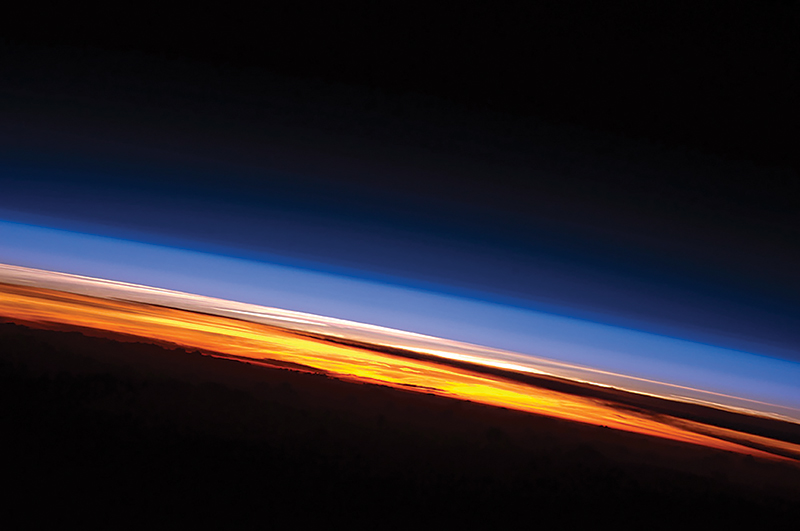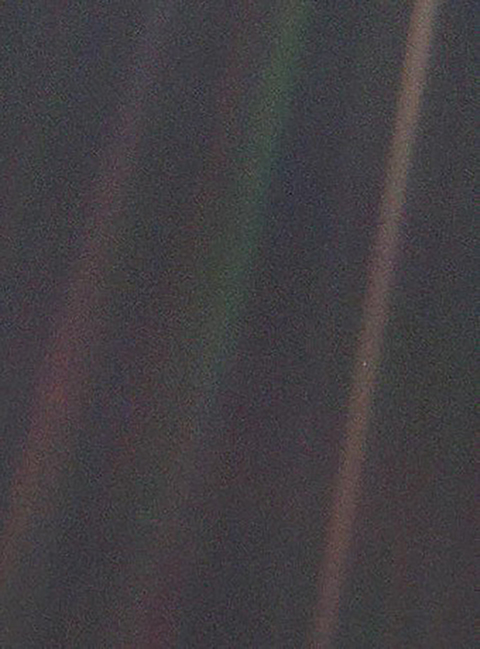SPS Makes a Statement on the Climate Crisis
Spring
2020
Feature
SPS Makes a Statement on the Climate Crisis
Aaila Ali, SPS Associate Zone Councilor, Zone 11, DePaul University; Tamara Young, SPS Zone Councilor, Zone 15, University of Utah; and Brad Conrad, Director, SPS & Sigma Pi Sigma
On January 25, 2020, the National Council of the Society of Physics Students (SPS) and Sigma Pi Sigma, the physics honor society, approved the following statement for general dissemination. This statement was approved by leadership on February 22, 2020, and is the society’s first statement about human-induced climate change and how we, as a community, can and should act:
“The Society of Physics Students and the Sigma Pi Sigma National Council encourage chapters to sponsor, engage in, and pursue outreach events that promote awareness of the scientific basis of human-induced climate change to the general public. Furthermore, chapters are encouraged to champion initiatives that address the climate crisis and to practice environmental sustainability.”
As physicists, we don’t often see the impact of our work within our own lifetimes. This doesn’t discourage us from trying to contribute but rather inspires us to try to leave a lasting impact in the physics community. This understanding has guided us as we’ve pushed the boundaries of physics and astronomy to where they are today. Similarly, we may not experience the worst impacts of the climate crisis ourselves, but this does not mean that the actions we take today won’t impact the lives of future generations. We have a responsibility to acknowledge the impacts of our actions and to try to mitigate our negative contribution to this crisis.
We live on a literal spinning rock, in the middle of a vacuum, millions of miles from the sun. Our atmosphere provides us with a layer of protection that enables life as we know it, yet is only ~16 km thick. That’s much less than 1% of the radius of the Earth! Figure 1 gives an overwhelming sense of that precariousness. Our actions here, today, in our daily lives will affect everything we and our communities experience moving forward. To have a real, lasting impact on what the future looks like, we need to move together through action and deed.
We at SPS encourage you to not just educate the general public about why we need to address the climate crisis but to conduct the activities of your chapter and your department in environmentally sustainable ways. The committee uses the word crisis intentionally and encourages chapters not just to act but to share ways to protect our precarious planet along with the broader community. Carl Sagan suggested to NASA that Voyager 1, as it was leaving the solar system, take the image shown in figure 2 to highlight how fragile and connected we truly are. Everyone you’ve ever known, everything you’ve ever touched, and (probably) every place you’ll ever go is in that single pale, blue pixel. We need to protect it, and fiercely, because it can’t protect itself, yet it protects us.
As chairs of the SPS National Council Governance Committee, we believe it is important to release a statement acknowledging the man-made climate crisis and champion initiatives to help alleviate it. We encourage students to think about the impact their own actions have on the environment, as well as the actions and events planned by their SPS chapters.
Tamara shares her own experience with climate change in Utah:
My first recognition of the impact of climate change was in the 1990s. I was a relatively new teacher, teaching science in the middle grades. I remember that one of the end-of-level test questions for my integrated 8th-grade science class was on the impact of climate change. It was a question intended to check whether students could use data and critical thinking skills. I don’t remember the details of the question, but I remember my response to it: I’m going to lose my garden.
I have lived in the Western United States for most of my life, and I have seen years of flooding and years of drought. The flood years are bad; the drought years are worse. One of the impacts of climate change is that local conditions are going to become more extreme. I already live in a desert. A couple of degrees temperature increase will change my home from a place where I can have a garden to a place where I cannot.
The water for my home comes from snowmelt. It is a precarious existence. Not only are you dependent on the amount of snow that falls each winter but also on the temperature of the ground when the snow falls. If it falls on warm ground, it melts and doesn’t contribute to the snowpack. Late spring blizzards help only if the ground is still frozen. The delay in the start of the ski season affects the local outdoor recreation industry; it also affects whether or not I can grow tomatoes.
Aaila’s personal experience with climate change involves the lovely Chicago winters:
When I was a young child and would dress up for Halloween, my mother would insist that I wear a large coat over my costume. By Halloween, there was already snow on the ground in Chicago. This is something I remember because it was always very upsetting not to be able to show off the Halloween costume I had worked hard to create. But still, winter was always my favorite season because of the natural beauty outside as well as winter traditions in the city.
This past year, it had not even snowed by Christmas. A few years ago it snowed randomly in the middle of April. We joke in the city that within a week you may cycle through all four seasons, but we also understand that recent changes in our climate are not normal. In Chicago, the impacts of climate change for now may simply manifest as snowless winters; elsewhere these changes result in hurricanes and floods and droughts, severely impacting the lives of people who live there.
Since recognizing the impact of climate change in my own community, I have come to appreciate how much my mother valued recycling at home. Our recycling bin was always much larger than the garbage can. In high school, I began to carry my own coffee mug around and looked into ways to compost organic waste. These are minor changes I introduced into my lifestyle to reduce my impact on the environment.
In the face of this climate crisis you might ask, Why are we talking about tomatoes and Chicago winters? Because it is personal. The climate crisis is personal. It affects each of us in a personal way. We could talk about other things that affect more people, that are more detrimental, that are more significant on a global scale. But we don’t change ourselves and our lives because of global problems. We change ourselves and our lives for personal reasons. These are the things that we are losing in the face of this climate crisis. What changes can we make to ameliorate the climate crisis?
We encourage every SPS chapter and member to think about these things. What do you value? What changes can you make?


Share what your chapter is doing with us and the community at sps [at] aip.org and on social media with the hashtag #SPSclimatechange.
